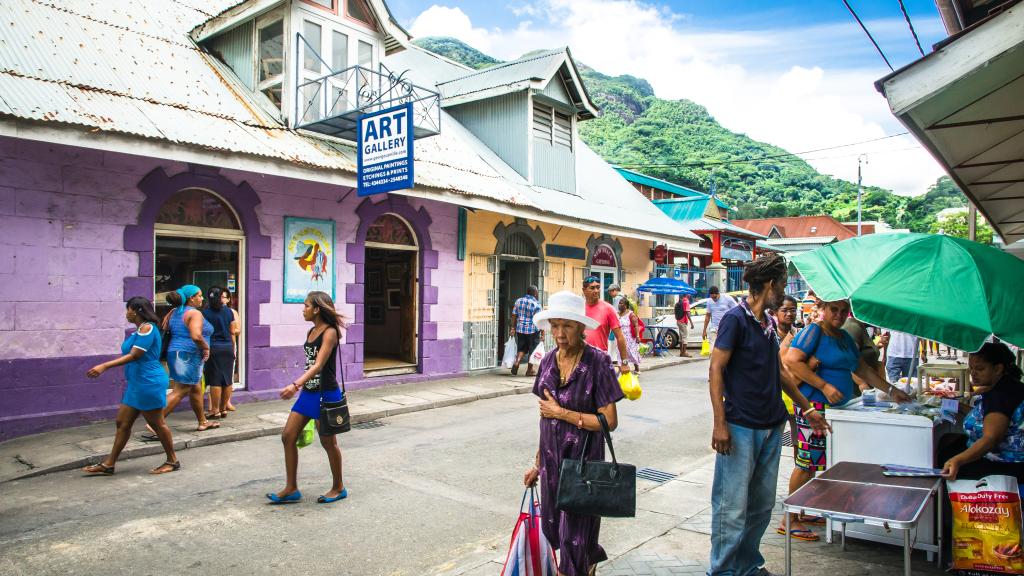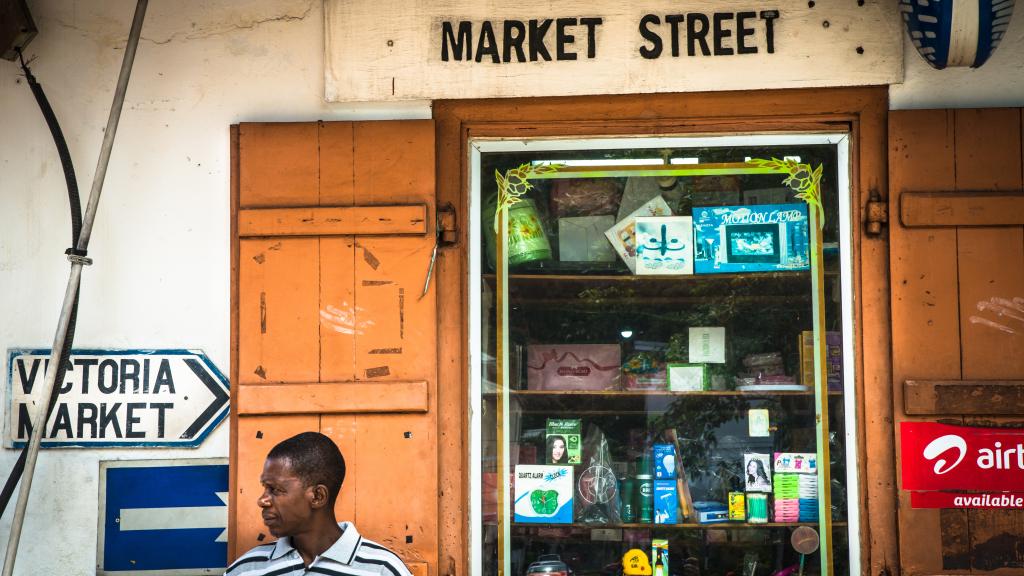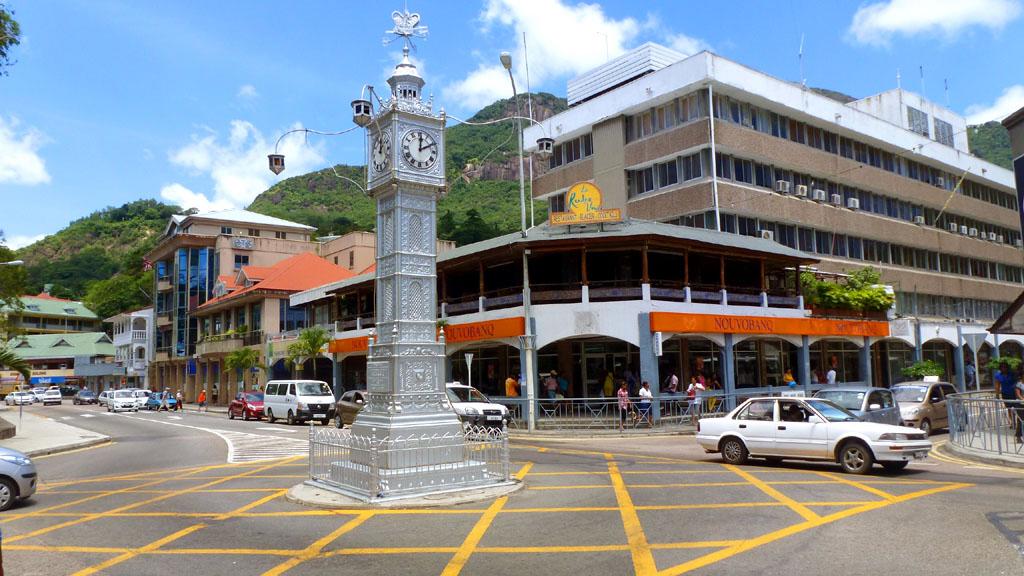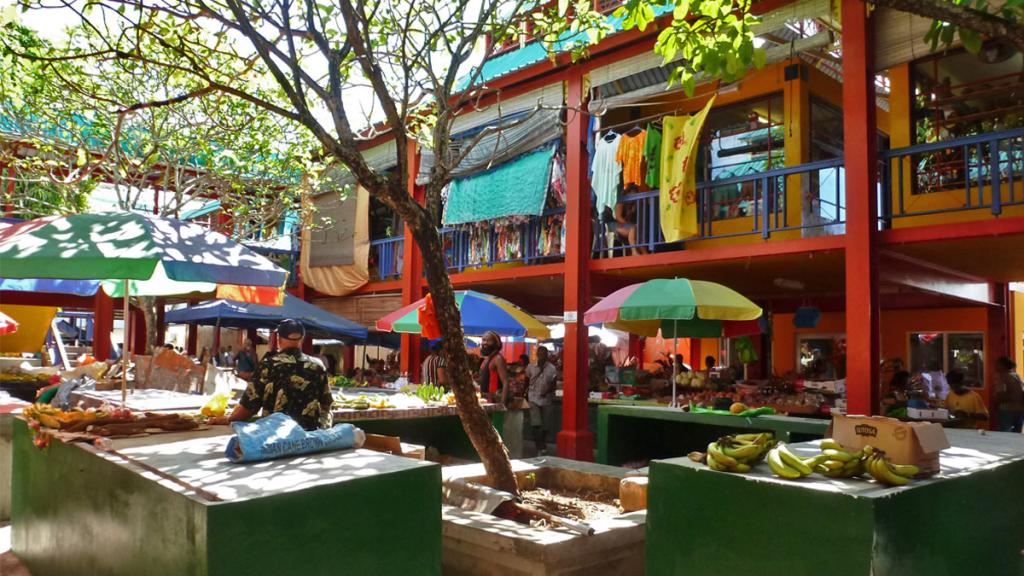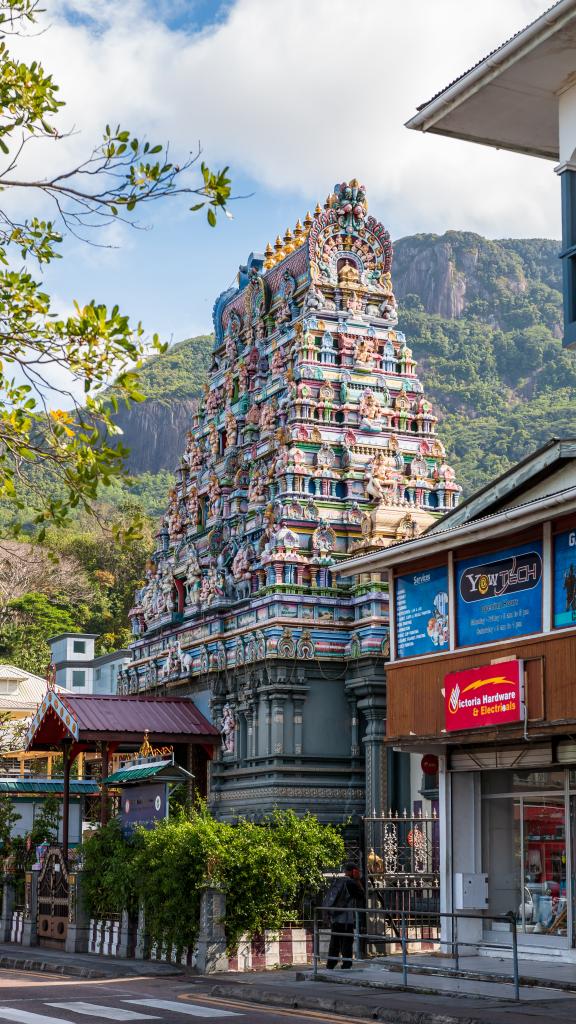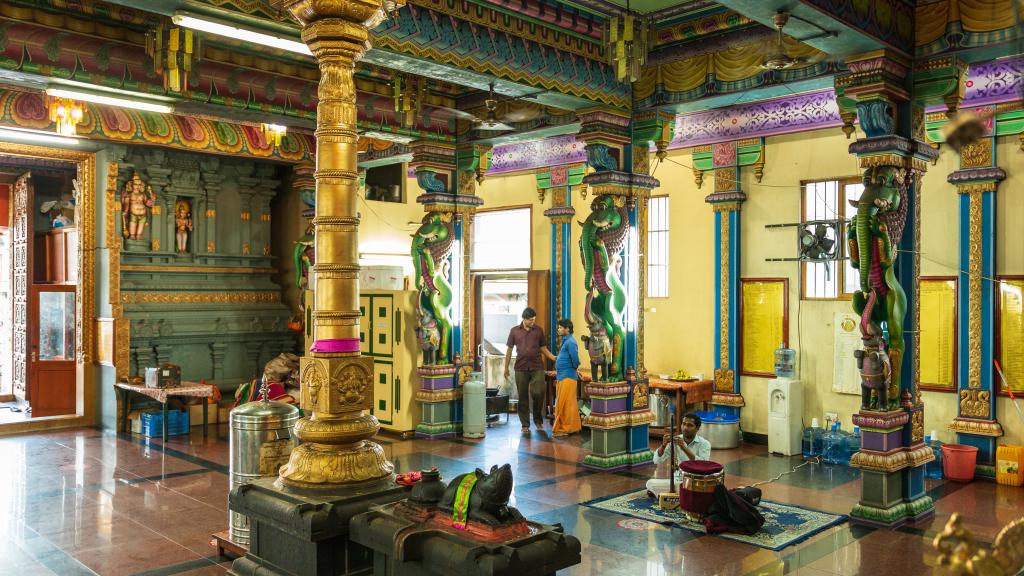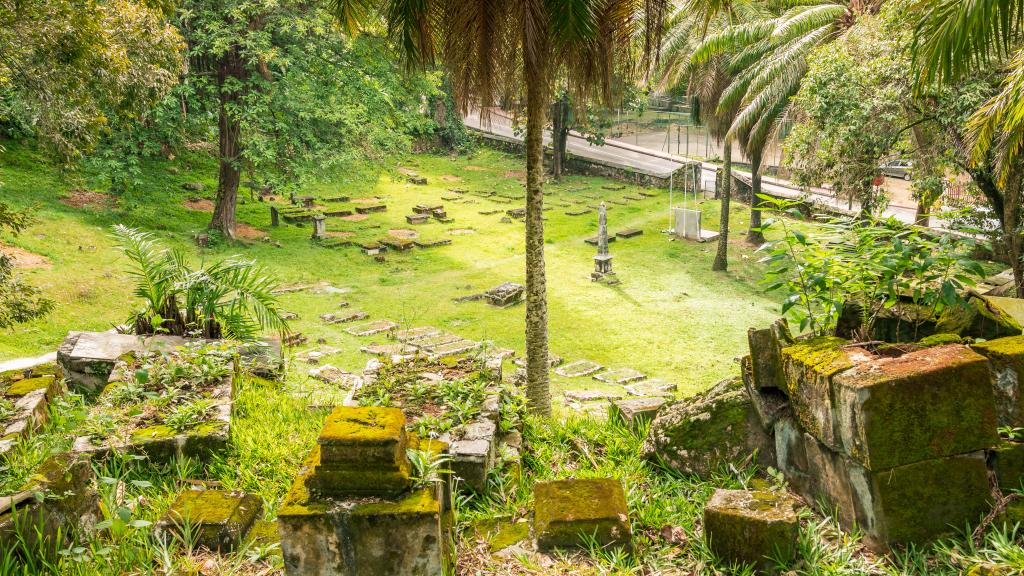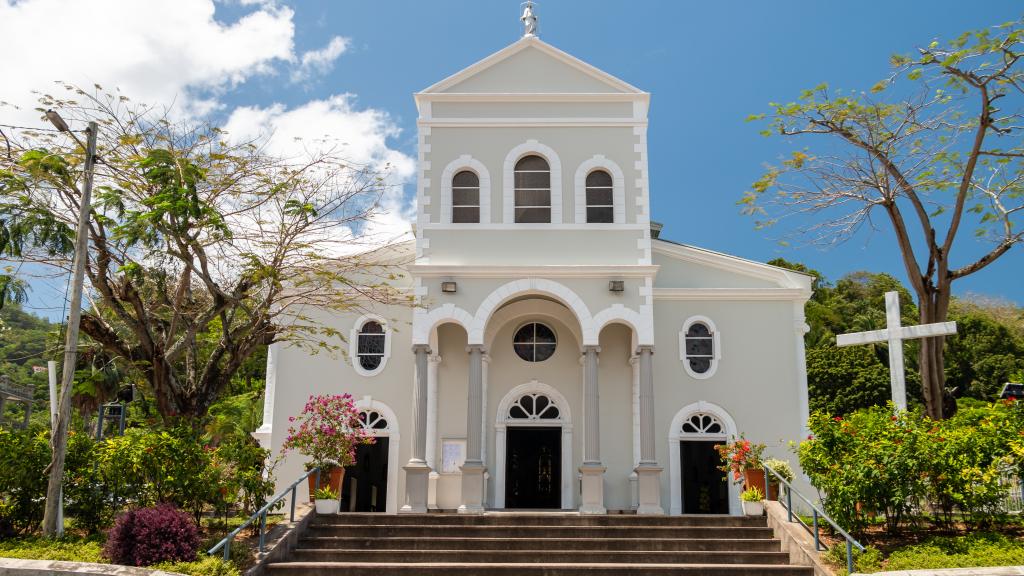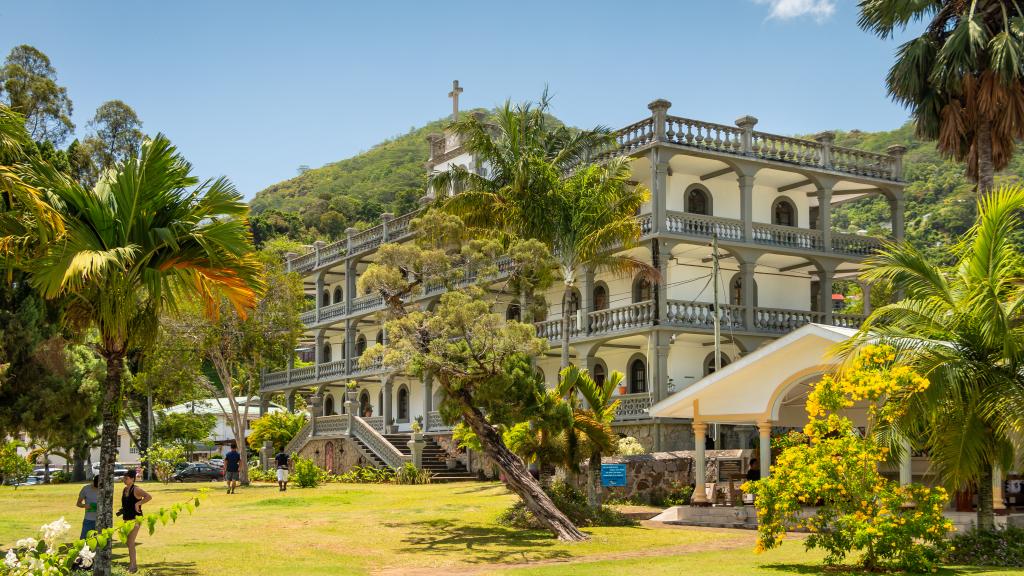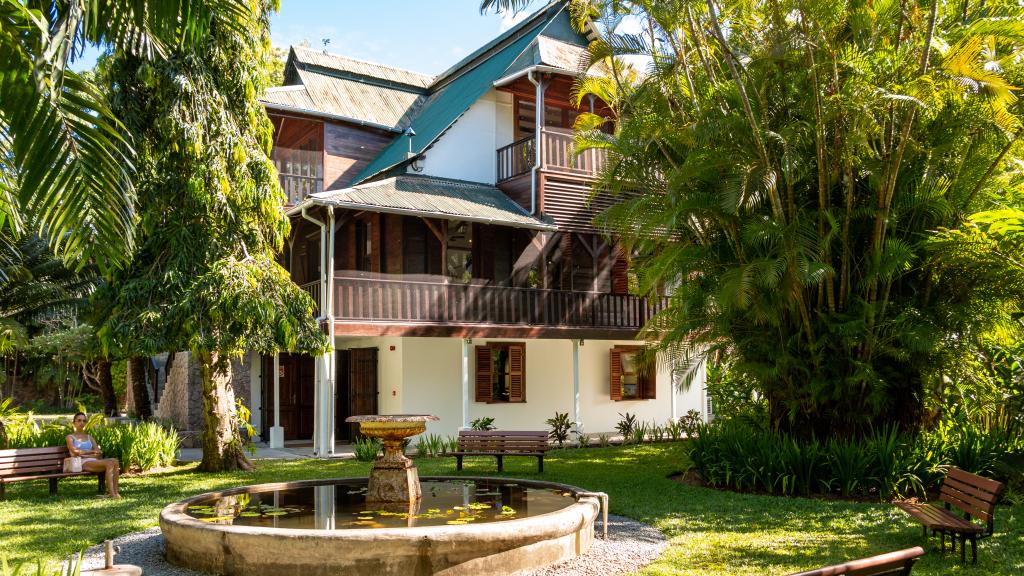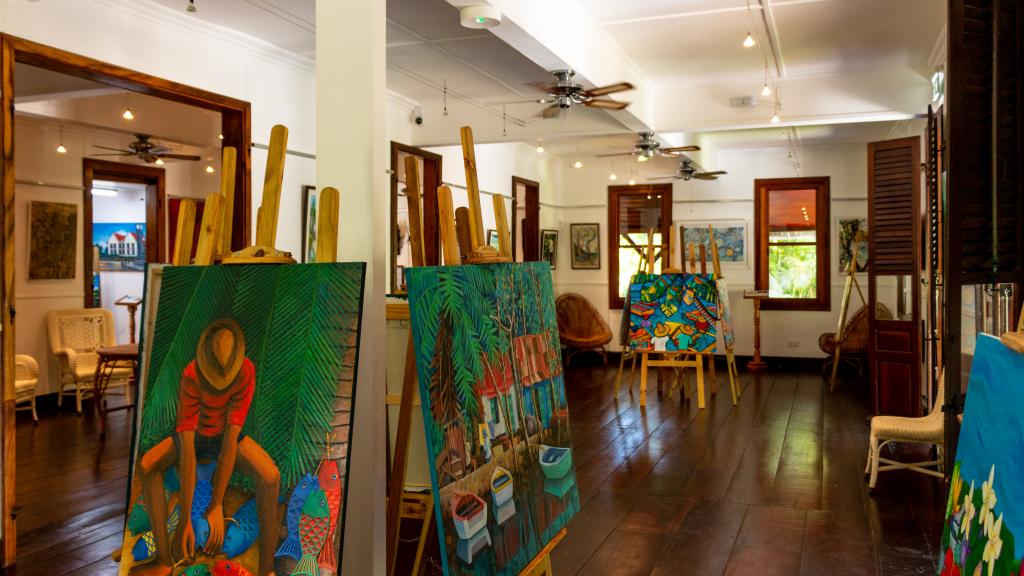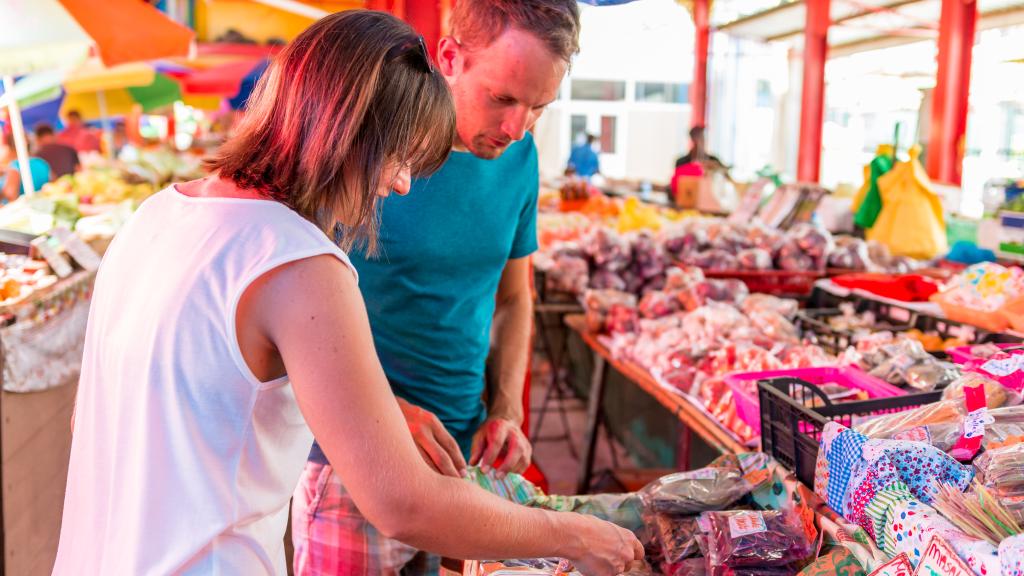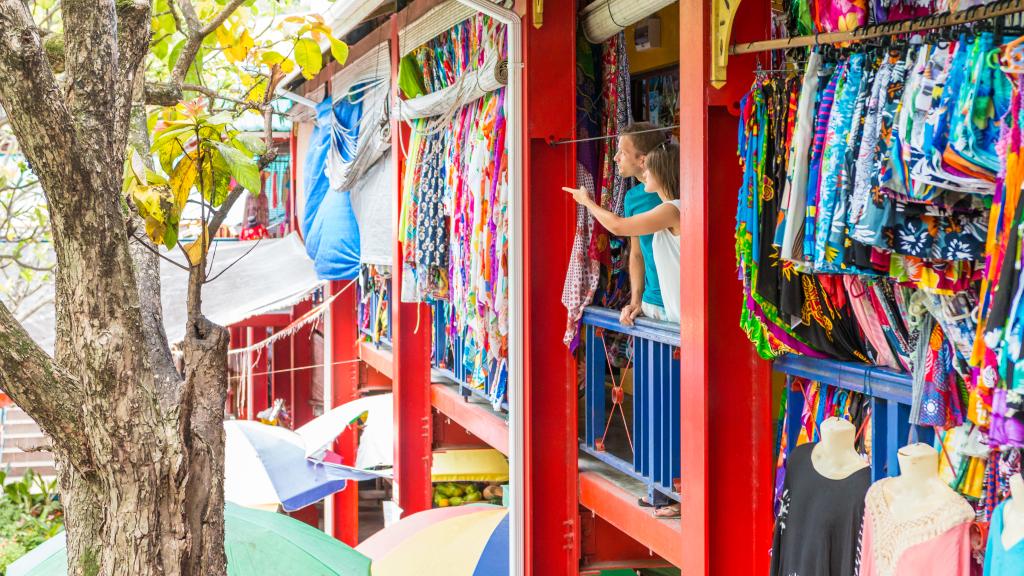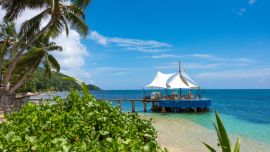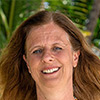Victoria
The Capital of the Seychelles
In the north-east of Mahé, bordered on one side by steep mountain slopes, is the capital of the Republic of the Seychelles. At first glance, it isn't really clear just how important the city is as the country's cultural and administrative centre; there are only two dozen streets, which not only characterises the cosy feel of the city but of the Seychellois way of life itself. With the spirit of 'Beauty Acts Silently' coursing through the veins of the city, visitors will struggle to find anything in terms of parking garages, neon signs, or showmanship in general; the city only has two traffic lights! That said, with around 25,000 inhabitants, Victoria is still the largest settlement in the Seychelles, and its only city. Its foundation harks back to the French settler period in 1778, before it was later given its name by the British, after Queen Victoria.
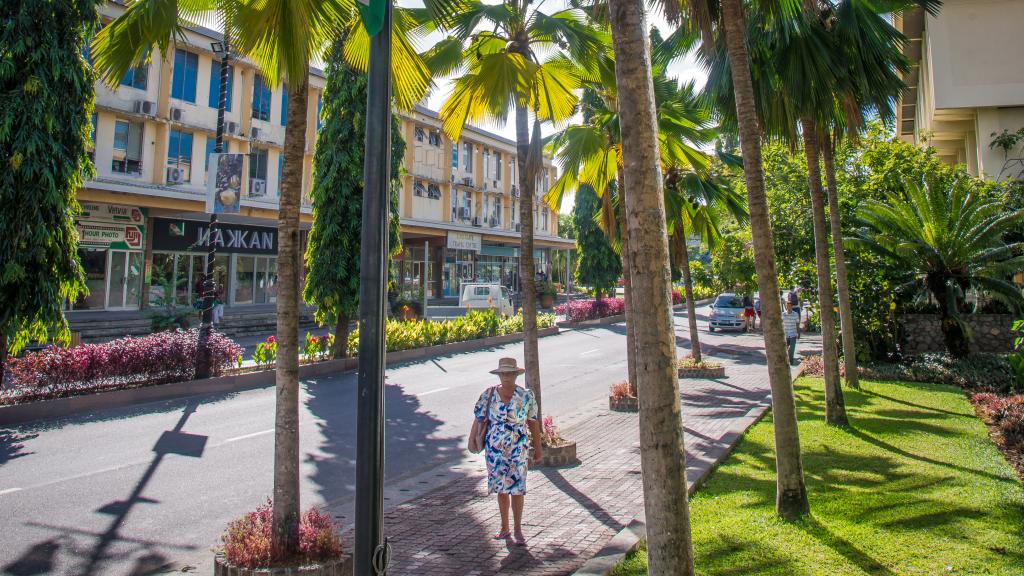
These days, this 'backwater' has grown up, with a small, lively market offering fish, fruit and vegetables, restaurants, offices, banks, and shops. At its eastern edge, Victoria opens up onto the harbour and the ocean, containing the Sainte Anne Marine National Park. The New Pier welcomes cruise ships, large freighters, and tankers, serving as the main trading port for the country. In terms of exports, the Seychelles sells spices, vanilla, coconuts, coconut oil, soap, tuna, and cinnamon bark. The city's surrounding urban area contains numerous amenities and attractions, including the International Airport, the Botanical Gardens, a university, museums, places of worship, offices belonging to tourism companies, airlines, and banks, and finally a cinema and shops.
In terms of its design, the town is mostly dominated by stone and wooden houses from the early 20th century, which paint a colourful picture thanks to their colourful facades, shutters, and balustrades. Walking through the streets past these buildings, you will surely pick up the scent of various exciting spice aromas, often emanating from small grocery stores where you can stock up on supplies. In the morning at around 8.00, as well as in the afternoon at 16.00, you will probably notice a more lively version of Victoria. At this time, many people go shopping or drink coffees. That said, this drama does not last very long, because, at 17.00 (or 18.00 at the latest) most establishments close their shutters and the Seychelles capital closes down for the evening. At this time, you can choose to round off your day with an exotic cocktail in a small bar or at the harbour, or look for evening entertainment at the nightclub or in the slot machine hall.
Victoria has two main centres, one of which revolves around the Clock Tower, a replica of the clock tower at Vauxhall Bridge in London and a symbol of the Seychelles that lies in the middle of the northern roundabout. In this area, you can find banks, the post office, the Palace of Justice, and the Pirates Arms snack restaurant on Independence Avenue.
Almost opposite here is the National Museum, while a little further along the road lie some travel agencies and the tourist information centre, where you can find maps for hiking trails. The second centre surrounds the Sir Selwyn Selwyn Clarke Market, which is around five minutes' walk away from the clock tower. This market is well-worth a visit, especially early on a Saturday morning, when a veritable hive of activity is on offer, including fish, spices, and exotic fruits for sale.
From the market, head north on Revolution Avenue, where more snack restaurants, travel agencies, and a large supermarket await. This road leads out of town over the St. Louis pass, before snaking down into Beau Vallon. From the peak here, around 300 metres (985 ft) above sea level, visitors can admire Victoria by taking a walk under the summit of the Trois Frères mountains.
Through land-reclamation, new areas were created in the northern part of the harbour basin, on which a large sports complex, tennis courts, a swimming centre, and a multi-purpose hall were built. In the process, the adjacent district of Roche Caiman saw around 2,000 residential units spring up, something that the ever-expanding city desperately needed and that curbed construction in Mahé's mountainous regions. Eden Island, located to the south of Victoria, is a more up-market version of this new residential area, offering contemporary design, luxury villas, elegant bars and restaurants, a marina, and a shopping centre.
Victoria is undoubtedly worth exploring a little more closely, and here are a few spots that offer exciting cultural and historical information to the Seychelles holidaymaker.
Arul Mihu Navasakthi Vinayagar Temple
One of the most-visited sites in the Seychelles and one of the most-admired, certainly by photographers, is the colourful, decorated temple roof to the Hindu God Vinayagar. This brightly-coloured construction at Quincy Street was built in 1992, and serves as the place of worship for around 5,000 Hindus living in Victoria. Those willing to take off their shoes and leave them at the entrance may visit the small temple outside of ceremony hours.
Bel Air Cemetery
Located on Bel Air Road is an area containing crumbling tombs and sarcophagi, where the citizens from the first days of Victoria were laid to rest. Among them was a mythical person called the 'Giant of Bel Air'. It is told that he was almost 3 metres (10 ft) tall at just 16 years old, could carry large fishing boats alone, and lifted bags of rice with just one finger. His grave is located in the central, elevated part of the cemetery, and the cemetery in general is a Seychelles national monument.
Bicentennial Monument
This statue can be found in Freedom Square, at the eastern end of Independence Avenue. The statue consists of three pairs of extended white wings, and was built in 1978 to commemorate the 200th anniversary of Victoria. The monument was created by Italian artist Lorenzo Appiani, who lived in the Seychelles at the time. The three wings symbolise the origins of the Seychelles' population, and represent the three continents represented in the country: Africa, Europe, and Asia.
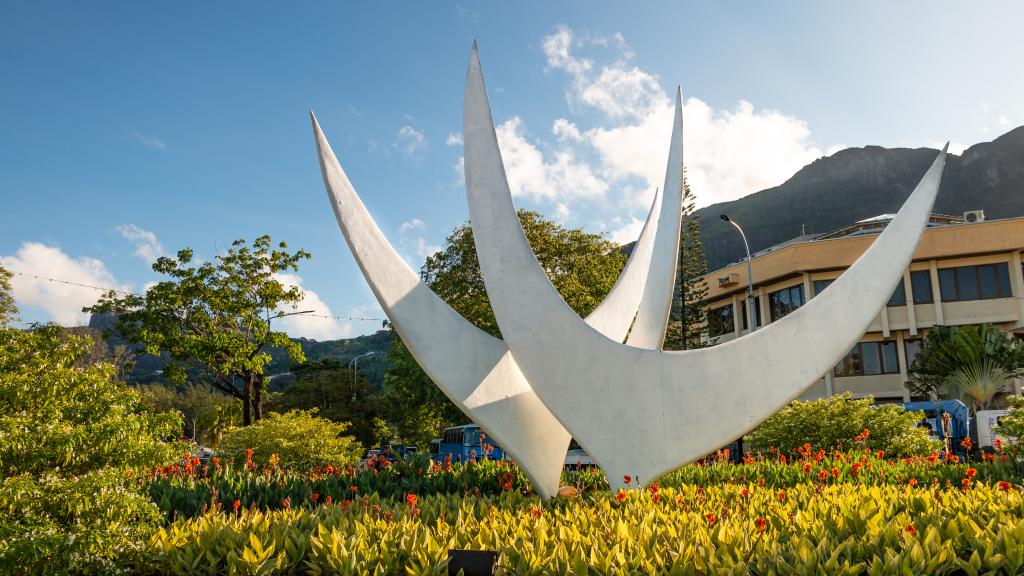
Clock Tower
In the middle of the intersection of Independence Avenue and Albert Street stands the Clock Tower (French: l'Horloge, Creole: Lorloz), now a symbol of the island's capital. It was erected in 1903 to honour the Queen. Despite often taking the name 'Little Big Ben', it is actually based on the less-famous clock tower in London, located at the intersection of Victoria Street and Vauxhall Bridge Road since 1897. The governor of the time saw the clock on a visit to London and ordered the smaller copy to be made. A special quirk of the clock is that it strikes twice on the hour, instead of once, inspiring the chorus of the song "Going back to the Seychelles, where the clock strikes twice".
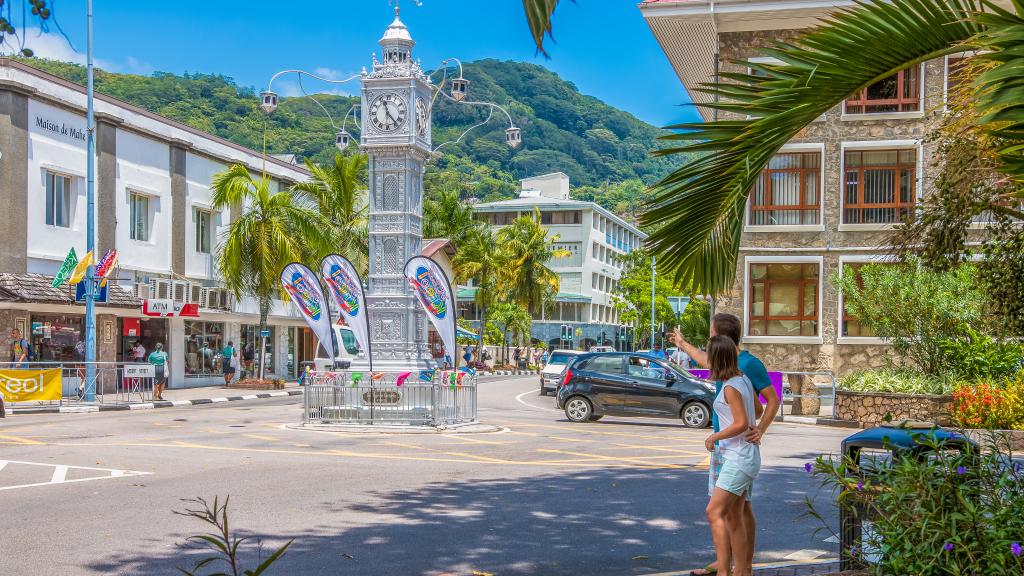
Cathedral of Our Lady of Immaculate Conception
The largest Catholic church in the Seychelles, built in 1892 and renovated in the mid-1990s, is located in a slightly elevated position at the edge of the city. The design of the cathedral harks back to Seyhellois architect Gilbert Frichot, while the tabernacles and doors were designed by sculptor Egbert Marday. Brilliant colours shimmer through the stained-glass windows of the building, which is surrounded by a beautiful garden. Beside the cathedral lies the two-storey Priest house, La Domus, built in 1934. This house consists of granite, and can legitimately be claimed to be one of the most impressive buildings in the Seychelles. The church serves as a quiet, contemplative space, not far from the bustle of the market, and one that is primarily used by women for worship or to lay down flowers. The bell tower is located behind the building, and dates back to 1898, while the small house next door was built in 1933. The church itself is large enough for around 700 worshippers.
Kenwyn House
Next to the Cable & Wireless building is Kenwyn House, renovated to remain in-keeping with its original style, and undoubtedly one of the most beautiful buildings displaying French colonial architecture. Inside, you will find an exclusive souvenir shop where you can buy precious items such as South African jewellery, while the house's art gallery displays Seychellois painting exhibitions.
Mosque in Victoria
Mahé is home to many different religious beliefs which co-exist in harmony, hence this small mosque in Victoria. The gilded dome of the building really contrasts the green that surrounds it.
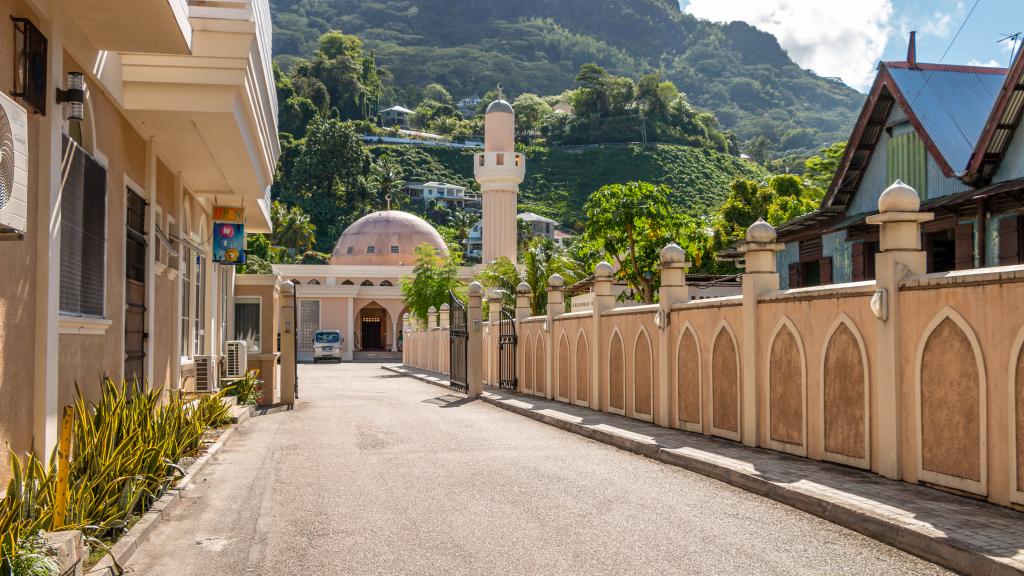
National Museum of History
Here, you can discover more about the history and development of the city. Prehistoric maps, old firearms, and other commodities are among the exhibits on show in the modern building of the National Library.
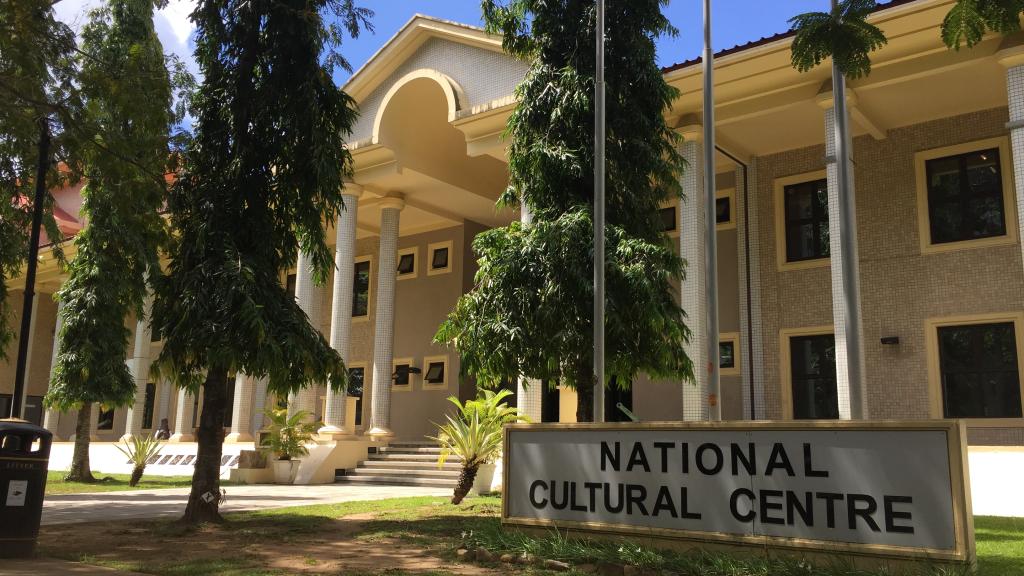
National Botanical Gardens
The green jewel of the city should definitely be on the agenda for all who visit Mahé. Here, you can get an overview of the different Seychelles flora species, as well as discover some of the local wildlife. At the entrance, you can pick up a brochure detailing the domestic and foreign plant species (a combined total of around 500 plants), including 40 species of palm trees. If you want to see everything, we recommend one or two hours. Some of the beautiful sights on offer include breadfruit, papaya, and nutmeg trees, Indian tamarind, exotic plants and ornamentals, and of course the famous Coco de Mer palm tree. Besides that, the comprehensive orchid garden offers 150 different species, while native birds and bats can be admired in the upper regions of the gardens. The tour concludes with a large enclosure, in which giant Aldabra tortoises live.
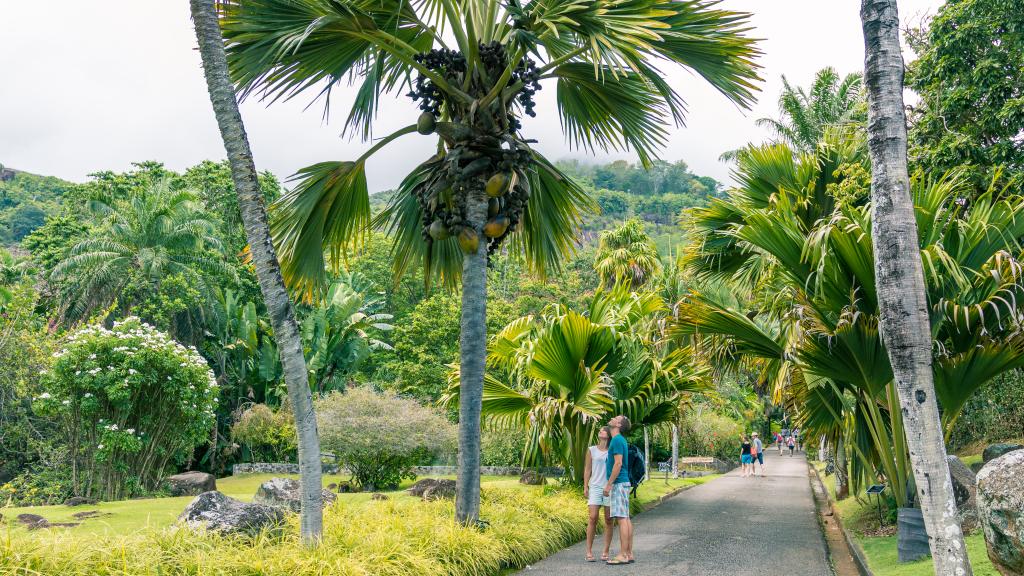
The garden was founded in 1901 by botanist Paul Dupont of Mauritius, who wanted to draw attention to the monoculture of coconut and vanilla cultivation in the Seychelles. Nowadays, this 10,000 square metre refuge promotes biodiversity and preservation. The plants that Dupont brought with him form the basis of today's park, which can be found on Mont Fleuri Road, south of the city. At its highest point, you can purchase hot and cold drinks, as well as lunch and dinner.
National Library Building
A modern steel/glass structure that lies on the corner of Francis Rachel Street/4th June Avenue houses an extensive library. Anyone who wishes to delve into the history, geography, culture, or literature of the Seychelles in air-conditioned surroundings should stop off here during their trip. Since 1995, the archive has been open to the public, and admission is free.
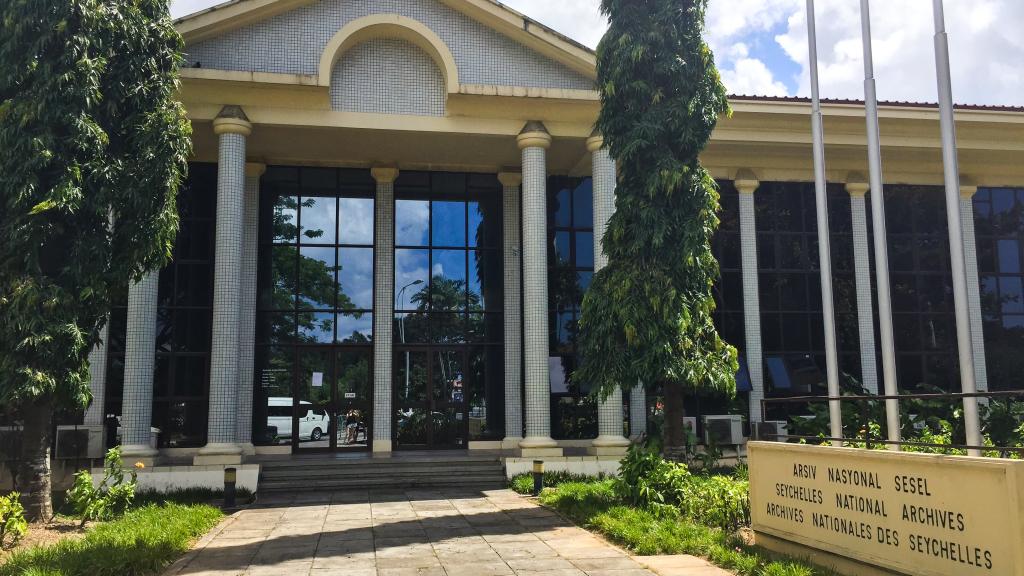
Seychelles Natural History Museum
Next to the main post office on Independence Avenue is a small museum, containing replicas, images, plants, and taxidermied animals. While not the most exciting exhibition, anyone interested in history or geography will find something to enjoy here, with ship models, maps, photographs, drawings and documents from historical periods. The so called 'Pierre de Possession' - the 'Stone of Seizure' - is probably the most important exhibit. This stone was installed in 1756 to symbolise the possession of the Seychelles by the French royal family. Another exhibit is the 180 million year-old granite stone that was found in 1981 while test-drilling for oil. This serves as proof that the rocks in the Seychelles and the plateau on which the islands stand are among the oldest formations on Earth, as well as strengthening the theory that the islands used to be part of Gondwana, the supercontinent.
ATTENTION: The Natural History Museum is currently closed due to renovation work.
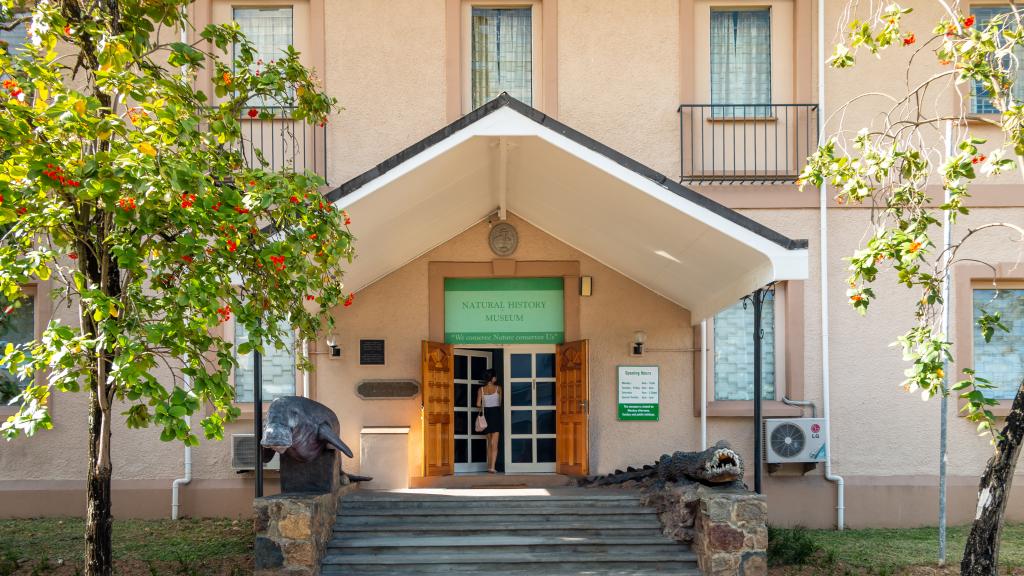
State House
Around 200 m (656 ft) west of the Clock Tower lies an entrance gate, behind which a lush, landscaped garden and statehouse, built in 1913, can be found. Formerly the residence of British governors, since the 1970s the building has served as the President's home and working space, so you can generally only see it from afar. That said, it can sometimes be worthwhile asking in one of the city's travel agencies for their help in getting a little closer, as the glorious idyll that can be found on-site is uniquely beautiful. All guests of the government have handed over various gifts over the years, including flowers, shrubs, and trees, and all of these have been given a place here and are carefully maintained.
St. Paul’s Cathedral
This church is located on Revolution Avenue, opposite the Clock Tower, and is the oldest and largest Anglican church in the Seychelles, and considered the second landmark of the archipelago. Consecrated in 1859 by the first Anglican Bishop of Mauritius, and subjected to a renovation in the early 21st century, the church now seats 800, twice as many as before. Since 1920, the Seychelles and Mauritius have shared their own diocese, with St. Paul serving as the second bishop's see.
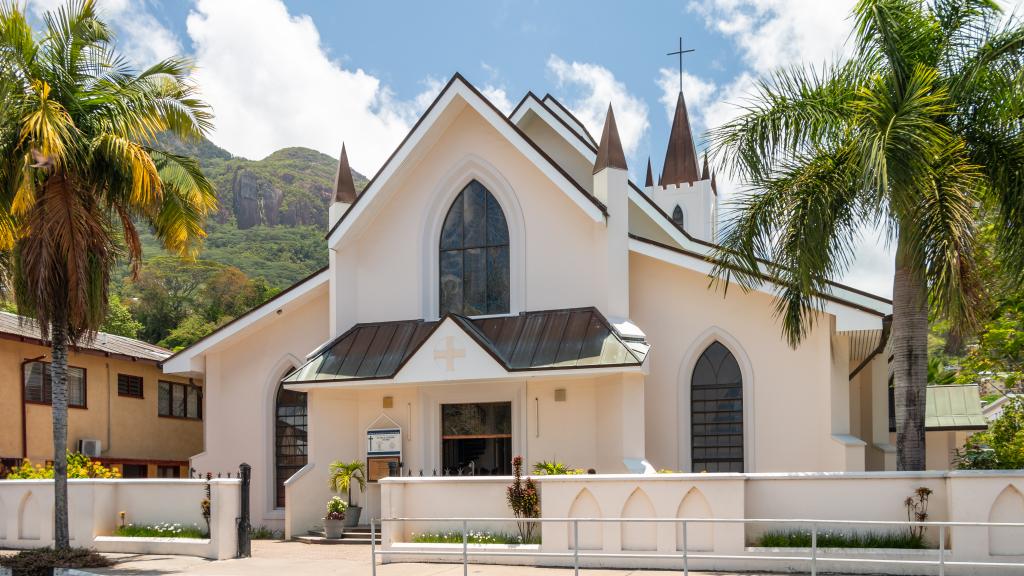
Sir Selwyn Selwyn Clarke Market
One of the two 'city centres' in Victoria runs through the middle of the city in the shade of a large mango tree, around the Sir Selwyn Selwyn Clarke Market. Built in 1840, the market was named after a French governor who built the stands himself for the local farmers and fishermen to use to sell their goods. Nowadays, the stalls have become more commercial, and are rarely run by the farmers themselves, but rather by merchants. Even early in the morning, the market is awash with people and stalls containing fruits, vegetables, spices, and artisanal works. The colourful, aromatic displays consist of limes, bananas, papaya, mango, passion fruit, guava, pineapple, sweet potato, aubergine, breadfruit, fish, chilli, star anise, tamarind, cinnamon, vanilla pods, hats, baskets, carvings, postcards, clothing, and much more! From the first floor of the market, you can look down on the hustle and bustle below, as well as enjoy souvenir shops and craft booths. Besides that, there's a quality café where you can sit and enjoy the intense colours, sounds, and smells of the market while enjoying breakfast or a snack for lunch.
ATTENTION: Due to renovation work, the market is currently located in the building of the former STC supermarket on Albert Street.
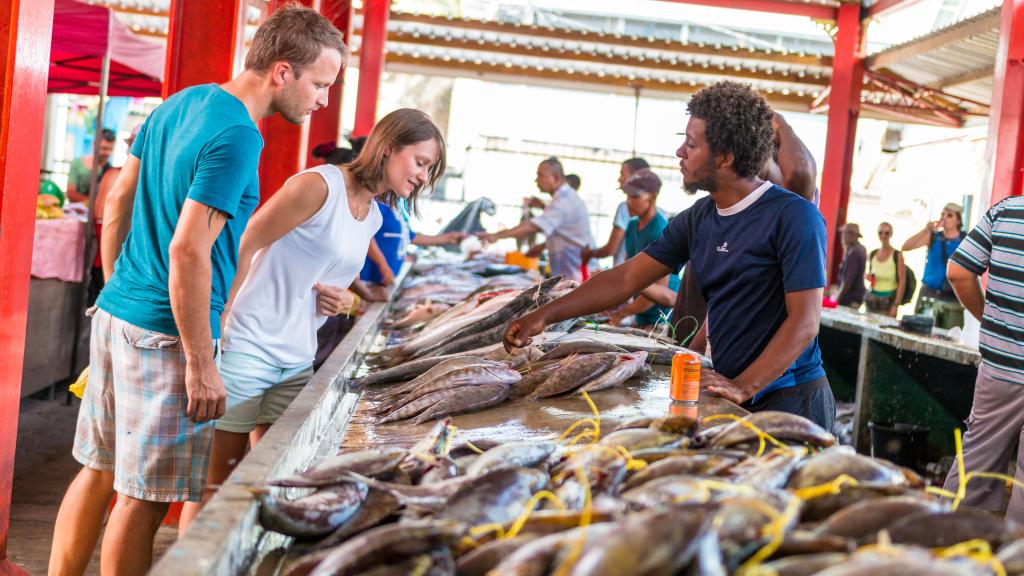
Next chapter: Ste Anne Marine National Park
